

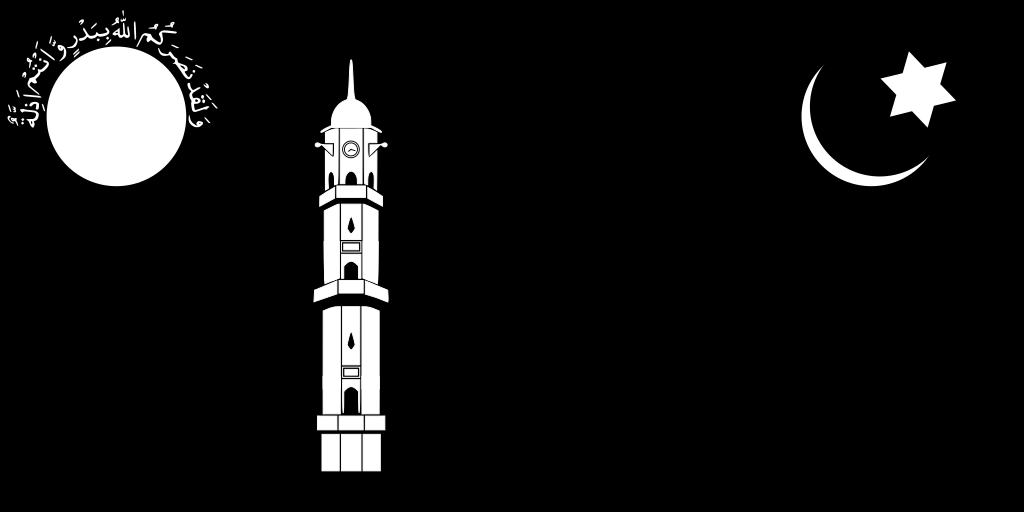
The flag of the Aḥmadīs, a Muslim community originating in what is now northern India, contains many symbols pertinent to the beliefs and foundational history of the group. Called Liwā’-e-Aḥmadiyyah (“Flag of Aḥmadism”), it was raised at the Jalsah Sālānah or annual gathering of Aḥmadīs of 1939, commemorating 50 years of the community’s existence, by Mirzā Bashīruddīn Maḥmūd Aḥmad, the second Caliph, or successor, of Mirzā Ghulām Aḥmad, the founder of Aḥmadism. Despite the intrigue and religious poignancy of the symbolism however, vexillologically it leaves something to be desired. The large star, tiny details on the minaret and cramped text (let alone any text) are somewhat awkward, and I’ve wondered for a long time if a flag faithful to the original could be redesigned to better fit commonly accepted standards of flag design.
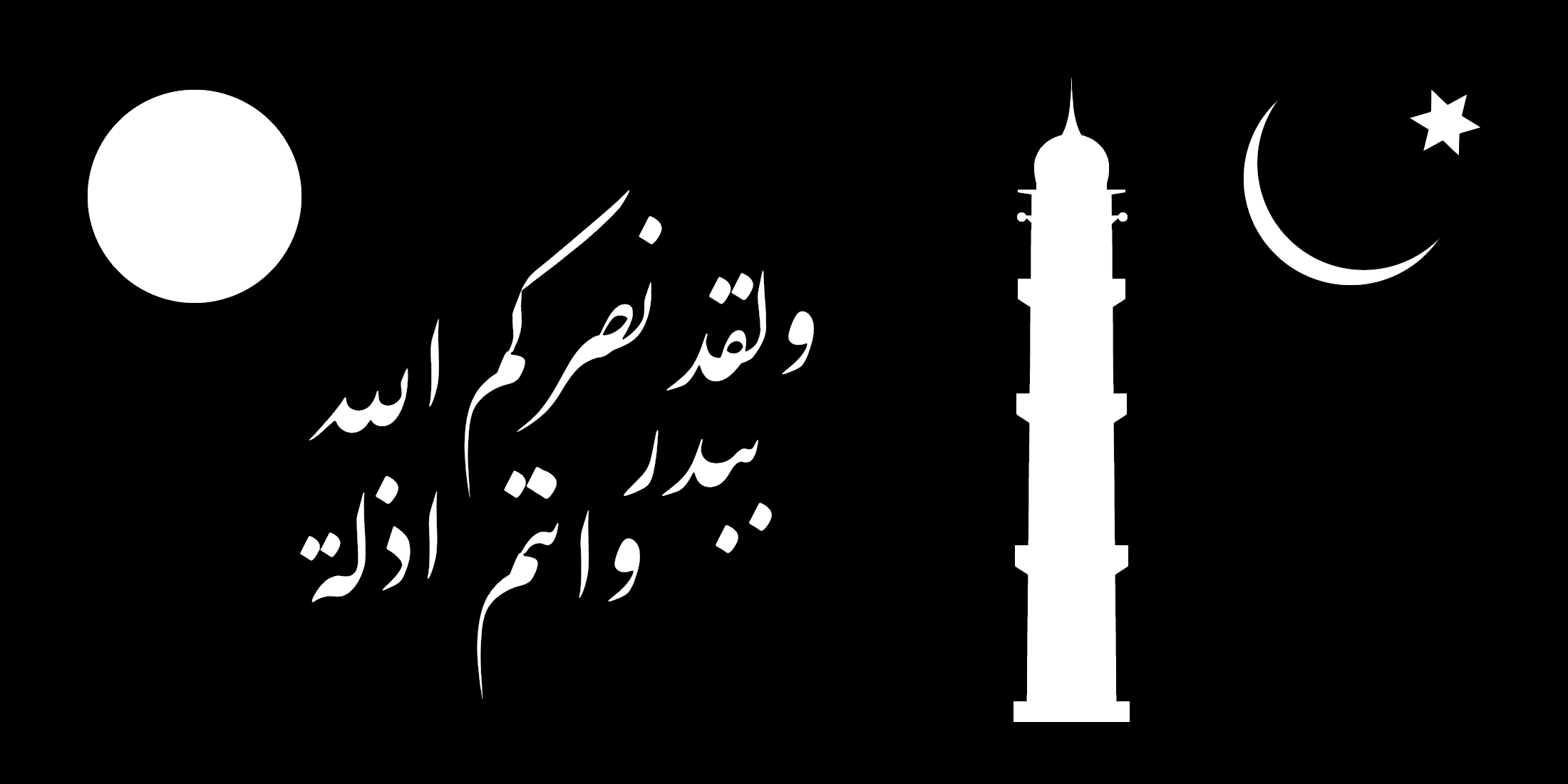
The flag’s foremost reference is the black standard and black and white banner used by Muḥammad in Islamic tradition, and the crescent and star also stands as a typical symbol of Islam. The six pointed star represents the six articles of faith in Sunnism: belief in the unity of God, His angels, His books, His prophets, the Day of Judgment and His ordainment of the future. More particular to Aḥmadīs is the white minaret, a representation of the minaret of the Aqsā Mosque in Qadian, where Aḥmadism was founded. A tradition states that Jesus would descend from the heavens east of Damascus at a white minaret. Ghulām Aḥmad claimed to fulfill the roles of Messiah returned and Mahdī, a separate messianic figure in Islamic tradition, as well as prophet, and the tradition of Jesus’ appearance was considered to be fulfilled by him. The minaret, from which the call to prayer is called, was considered symbolic for the spread of Islam with his advent, and the minaret at the Aqsā Mosque is based on it. The full moon may recall Ghulām Aḥmad’s son and Maḥmūd Aḥmad’s brother Mirzā Bashīr Aḥmad, who in 1893 in a revelation concerning his birth was called Qamar al-Anbiyyah, “Moon of the Prophets.” Above the full moon reads the beginning of 3:113 of the Qur’an (3:114 in Aḥmadī standard): “And surely he helped you when you were abased at Badr,” comparing the persecuted Aḥmadī’s situation with the early Muslim community fighting off pursuing oppressors.
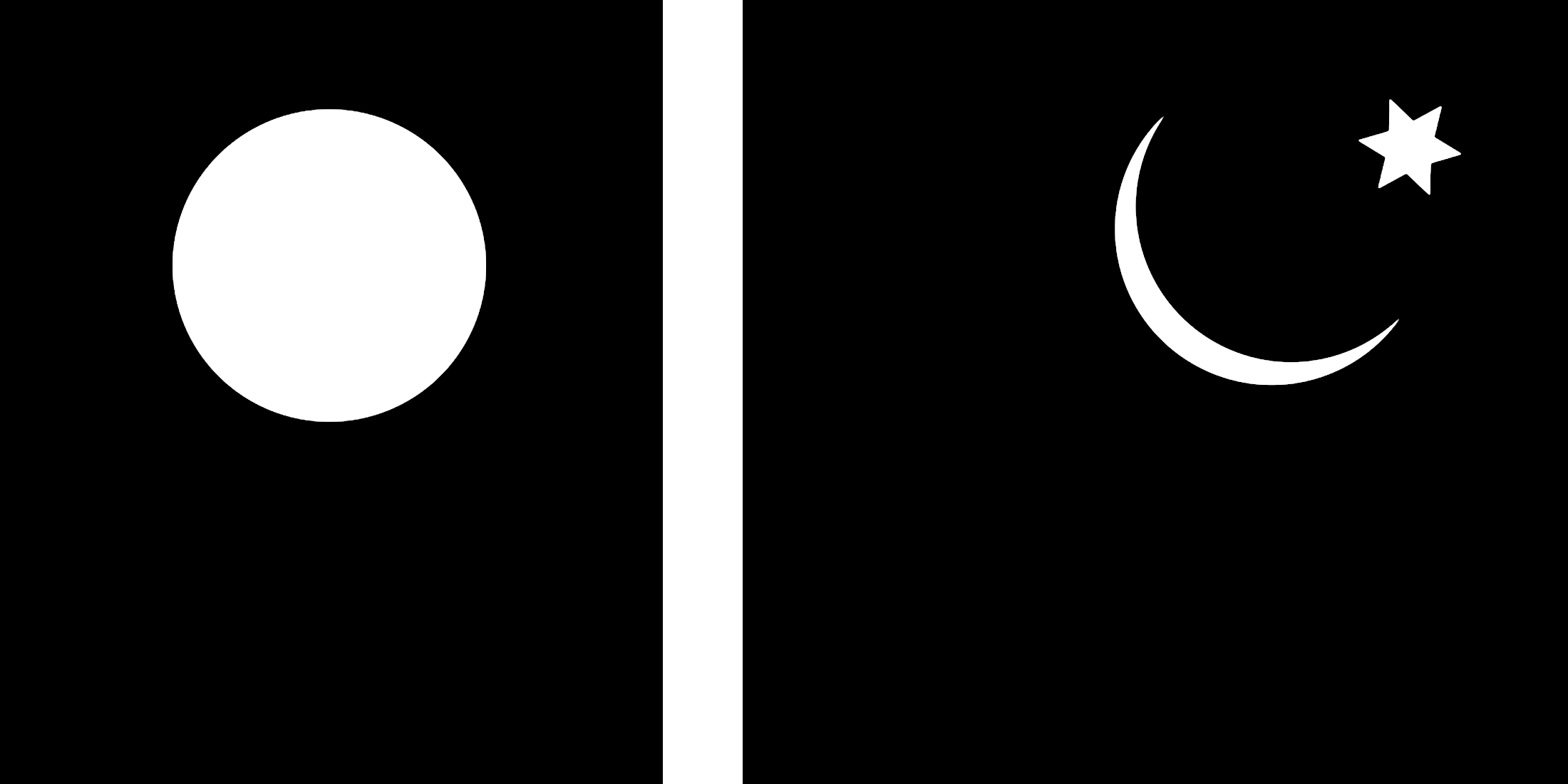
I decided to make two designs, one more strictly adhering to more geometric and simple style favored in flag design, and the other more reminiscent of religious banners used especially in India, as well as other Islamic calligraphic flags.
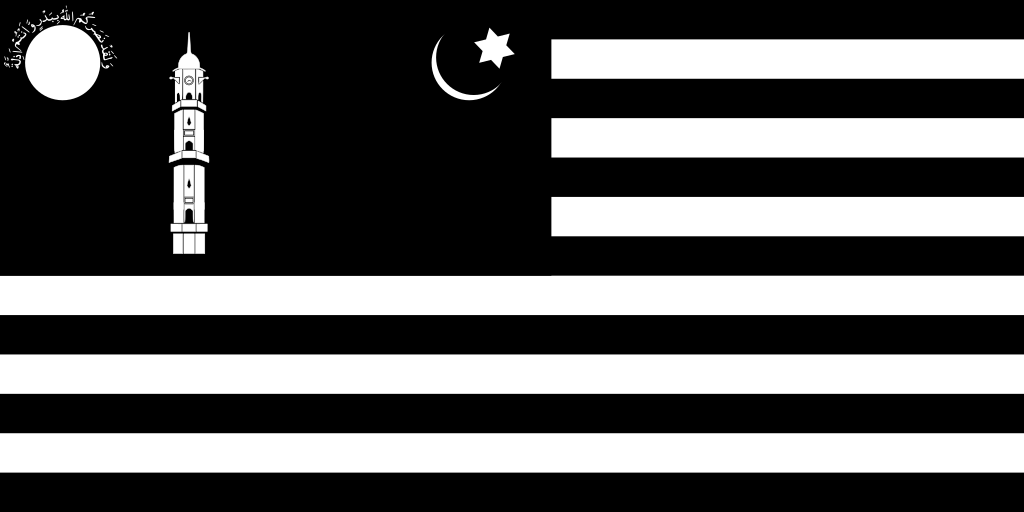
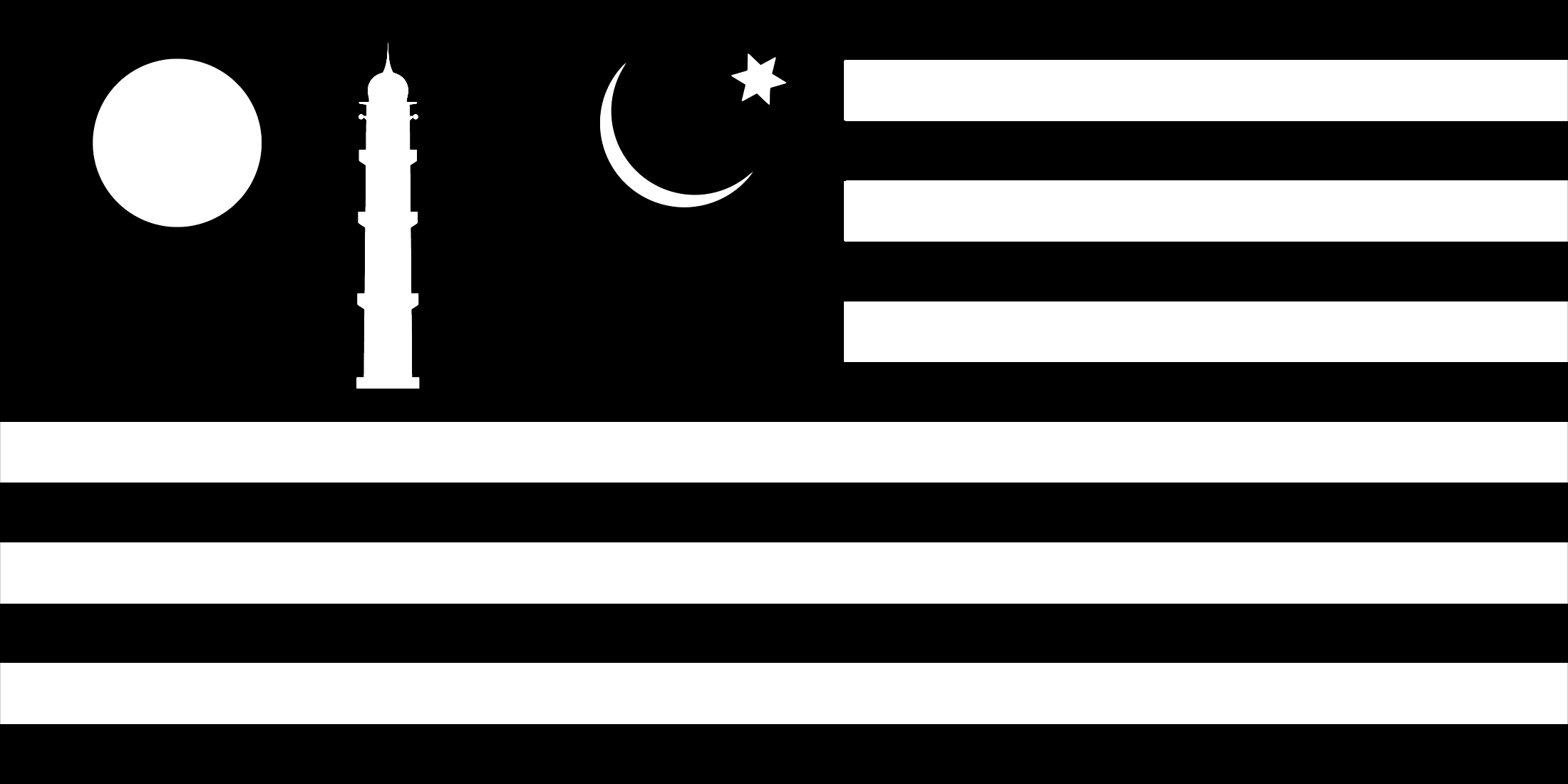
In addition to the flag of Aḥmadism, Aḥmadīs possess two flags for the auxiliary men’s and women’s organizations. The flag of men’s organization, Majlis Khuddam al-Aḥmadiyyah, “Association of the Servants of Aḥmadism,” is composed of a small rectangle of the flag of Aḥmadism in the top left quarter, with thirteen black and white stripes representing the (at the time) thirteen centuries of Islam’s existance.
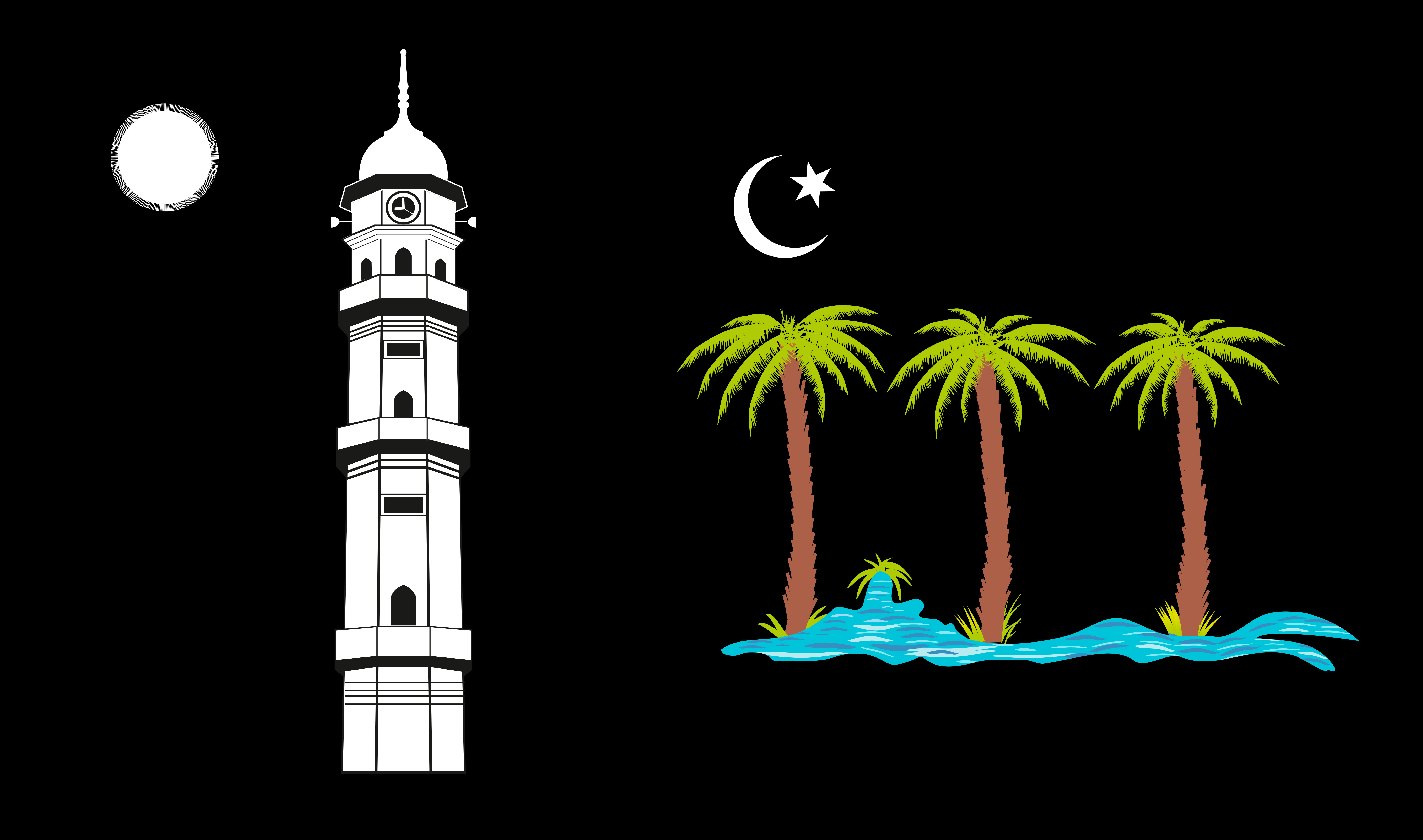
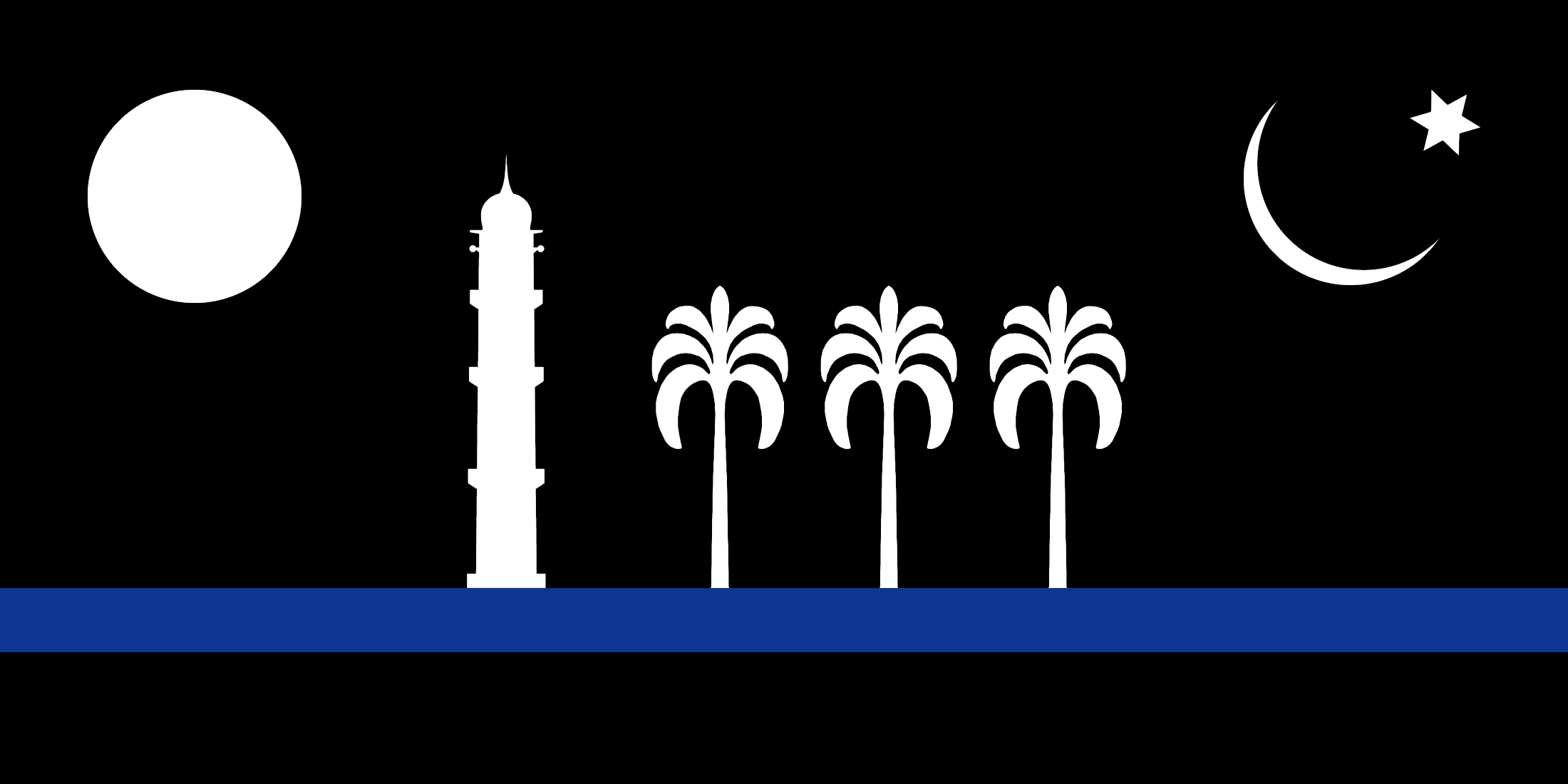
The flag of the women’s organization, Lajnā Imā’illāh, “Committee of God’s Handmaids,” is the flag of Aḥmadism with the addition of three date palms before a stream. This recalls Mary’s birth of Jesus by a date palm and stream in the Qur’an. The other palms recall Āminah bint Wahb and Hagar, the mothers of the prophets Muḥammad and Ishmael respectively. With the organization’s flags I tried to find a reasonable compromise between styles.